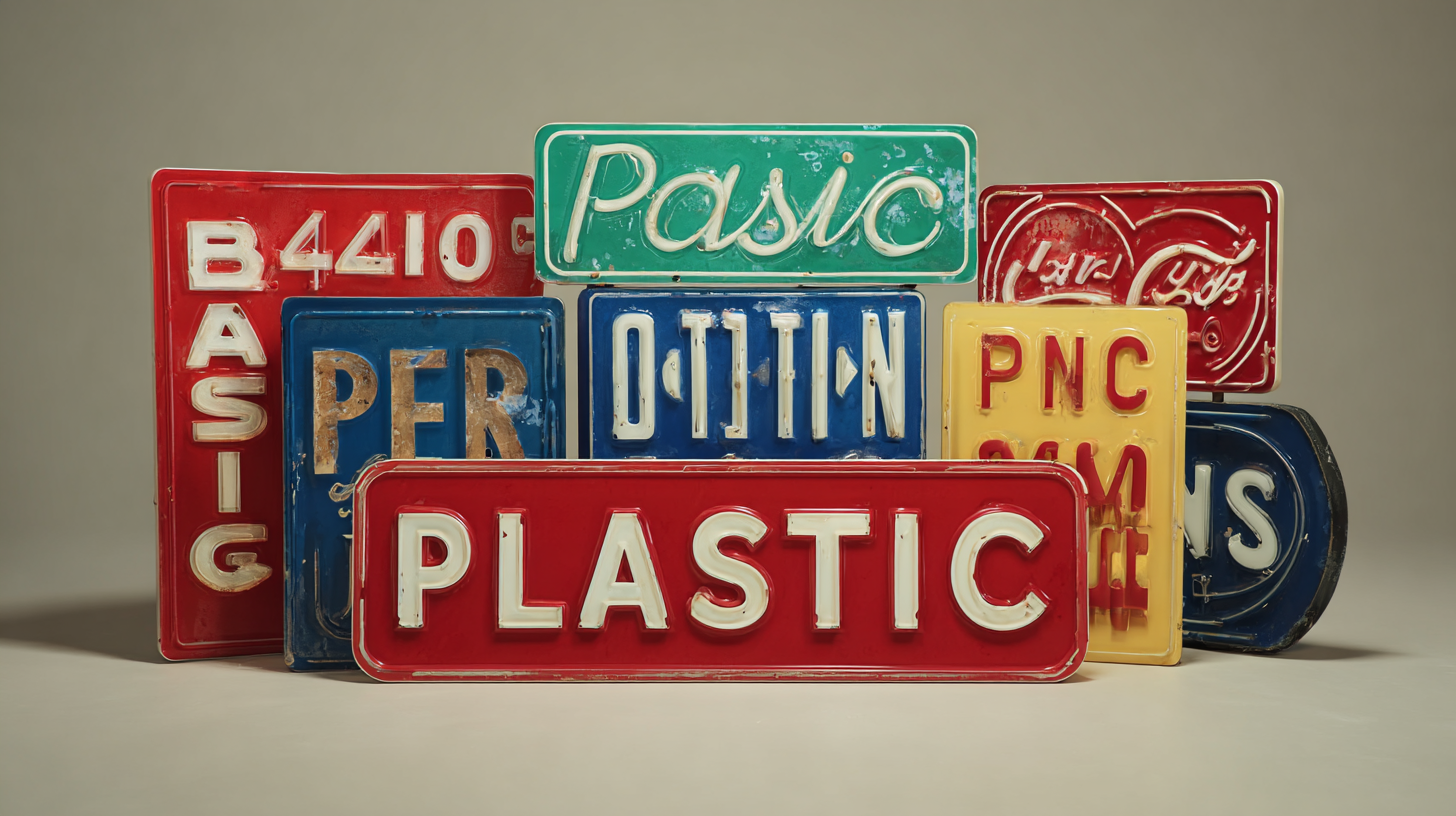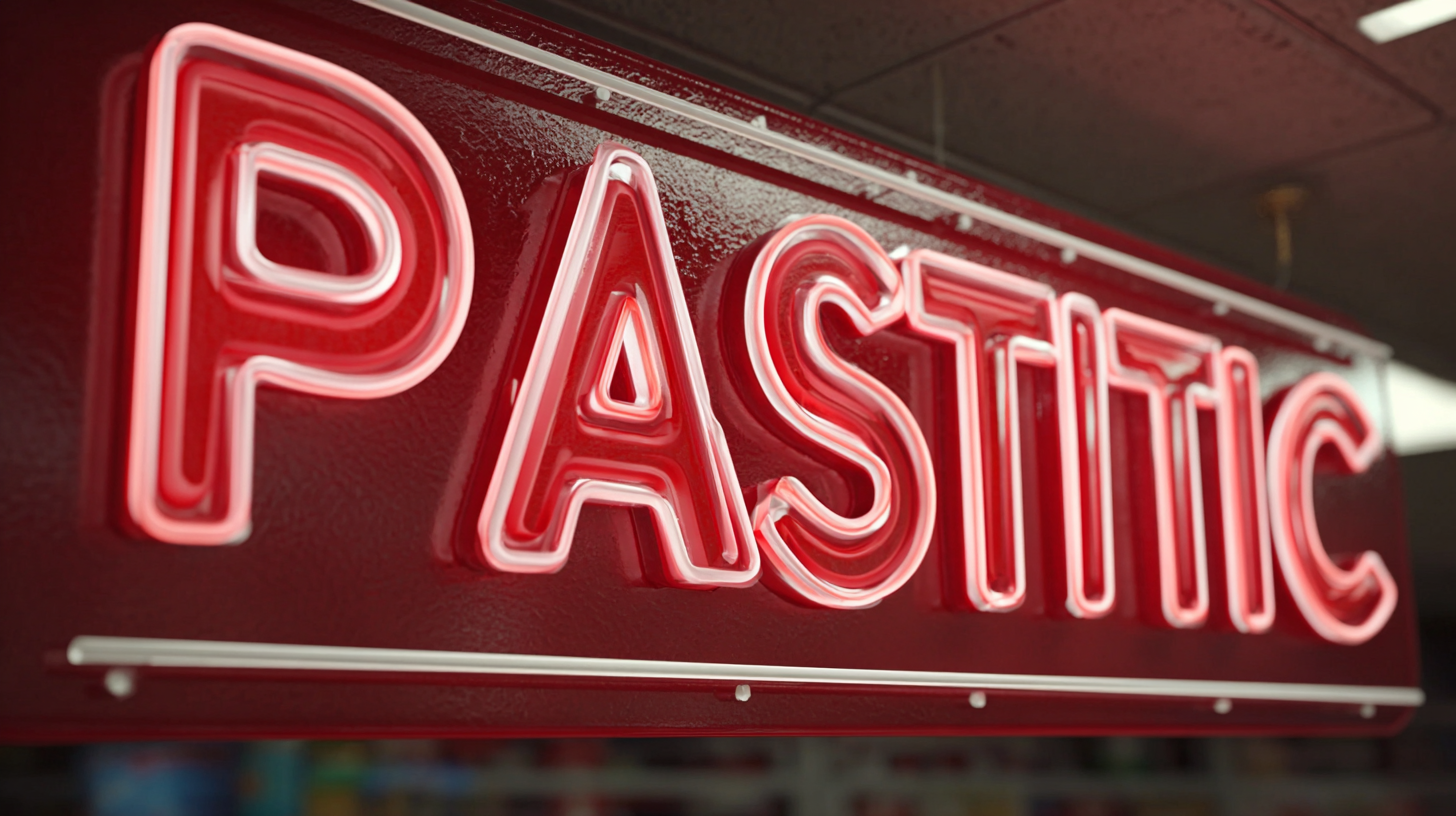Exploring the Versatility of Best Plastic Signs: Characteristics, Use Cases, and How to Choose the Right One
In the rapidly evolving world of signage,
"Plastic Signs" have emerged as a
versatile and durable solution
for various applications across industries. According to a report by
Smithers Pira, the global market for plastic signage is projected to reach
$27 billion by 2025, driven by their lightweight nature,
cost-effectiveness, and resilience in diverse environments. As businesses and organizations continuously seek
innovative ways to communicate effectively, the adaptability of plastic signs
becomes increasingly important.
From branding and promotional displays to directional guidance in public spaces, understanding the
characteristics and selecting the right type of plastic sign can significantly enhance visibility and engagement.
This blog will delve into the unique attributes of plastic signs, explore their diverse use cases,
and provide guidance on how to make an informed choice that meets your specific needs.
Exploring the Unique Characteristics of Plastic Signs for Various Environments
Plastic signs are incredibly versatile and come with unique characteristics that make them suitable for various environments. One of the most significant advantages of plastic signs is their durability. Unlike paper or cardboard, plastic signs can withstand harsh weather conditions, making them ideal for outdoor use. They are resistant to fading, moisture, and extreme temperatures, ensuring that your message remains clear and legible over time.
In addition to their durability, plastic signs are lightweight and easy to install, allowing for quick setup in any environment. Their flexibility also allows for creative designs and shapes, making them suitable for promotional signage, directional signs, or safety warnings. Whether in bustling urban settings, corporate offices, or construction sites, plastic signs can effectively convey information without the risk of damage or deterioration, which is essential for maintaining visibility and communication. With the right choice of color, font, and material thickness, plastic signs can be tailored to meet the specific needs of any location.
The Different Use Cases for Plastic Signs in Commercial and Industrial Settings
Plastic signs are becoming increasingly popular in commercial and industrial settings due to their versatility and durability. In retail environments, these signs can effectively direct customers, promote sales, or highlight specific products. For example, bright, attention-grabbing point-of-purchase displays made from plastic can influence buying decisions, while directional signs guide shoppers throughout the store. When choosing to use plastic signage, consider factors such as visibility and the overall aesthetics of your space to enhance the shopping experience.
In industrial settings, plastic signs serve a crucial role in safety and operational efficiency. They can be used to mark hazardous areas, display safety protocols, or indicate operational procedures. High-visibility materials are essential for ensuring that these signs are easily seen and understood by all employees.
Tips: When selecting plastic signs, evaluate the environment where they'll be placed. Use UV-resistant materials for outdoor settings to prevent fading, and opt for sturdy variants that can withstand harsh conditions in factories or warehouses. Additionally, consider custom designs that incorporate your brand colors and logos to create a cohesive look that represents your business effectively.
How to Select the Right Plastic Sign for Your Business Needs
When selecting the right plastic sign for your business needs, it is essential to consider various factors that can influence both functionality and aesthetics. Different types of plastic signs offer distinctive characteristics that make them suitable for specific applications. For instance, materials like PVC are known for their versatility, while acrylic signs offer a more upscale look, making them ideal for businesses looking to enhance their brand image. Additionally, factors such as durability, weather resistance, and printability should be evaluated based on where the sign will be displayed—whether indoors or outdoors.

Another crucial aspect to consider is the intended use case of the plastic sign. Different environments and purposes may require varying levels of visibility or communication effectiveness. A retail store might benefit from vibrant, eye-catching signs to attract customers, while a corporate office may prefer sleek, professional signage that conveys information discreetly. Moreover, it is vital to think about the sign's size and placement to ensure it meets visibility requirements and regulatory standards, particularly for directional or safety signs. By carefully evaluating these characteristics and use cases, businesses can make informed choices that align with their branding and operational needs.
The Benefits of Choosing Eco-Friendly Materials for Plastic Signs
The growing demand for eco-friendly materials in signage is shifting industry standards, with many businesses recognizing the importance of sustainable practices. According to a report by Smithers Pira, the global market for biodegradable materials is projected to reach $7.59 billion by 2025, indicating a significant shift towards environmental consciousness. Utilizing eco-friendly materials in plastic signs not only minimizes landfill waste but also reduces carbon footprints, meeting both consumer expectations and regulatory demands.

Furthermore, signs made from recycled or renewable materials often maintain durability and visual appeal, thereby proving that sustainability doesn't compromise quality. Research from the International Sign Association suggests that businesses that adopt environmentally friendly signage practices can enhance their brand image and customer loyalty. In fact, a survey indicated that 70% of consumers prefer to support brands that invest in eco-conscious initiatives. This trend highlights the growing importance of sustainable choices in marketing and brand strategy, emphasizing that eco-friendly plastic signs are not just a trend but a lasting commitment to environmental stewardship.
Comparing Plastic Signs to Other Signage Materials: Pros and Cons
When considering signage options, plastic signs often present a compelling choice compared to materials like wood, metal, or paper. One of the major advantages of plastic signs is their durability; they are resistant to weather conditions, making them ideal for outdoor use. Additionally, plastic is lightweight and can be easily transported and installed. However, it’s important to note that while plastic signs can be less expensive, they may lack the premium appearance and sturdiness of metal signs for more formal contexts.
When choosing the right type of sign, it's essential to weigh the pros and cons of plastic versus other materials. For instance, metal signs are incredibly durable but can be heavy and costly. Wood signs, on the other hand, offer a natural aesthetic but may require more maintenance over time. Tips for selecting the perfect sign include assessing the environment where the sign will be placed—if it’s exposed to the elements, plastic might be the best option. Consider also the type of message you want to convey; simpler graphics or text can be effectively rendered on plastic, while more intricate designs might benefit from a material like wood or metal.
Ultimately, your choice should align with both functional needs and the message's visual appeal. Remember to think about factors like longevity, cost, and the environment where the sign will be used. By carefully evaluating these aspects, you can make a well-informed decision that enhances your branding or informational goals.
Exploring the Versatility of Best Plastic Signs: Characteristics, Use Cases, and How to Choose the Right One
| Characteristic |
Plastic Signs |
Other Signage Materials |
| Durability |
High resistance to weather and impact |
Varies; can be lower (e.g., cardboard) |
| Weight |
Lightweight |
Can be heavier (e.g., metal) |
| Cost-effectiveness |
Generally more affordable |
Higher production and material costs |
| Customization |
Easy to print and customize |
Varies based on material (e.g., metal can be complex) |
| Eco-friendliness |
Recyclable options available |
Varies; some materials are non-recyclable |
Use Cases for Plastic Signs
| Use Case |
Description |
| Event Signage |
Ideal for temporary events like fairs and festivals. |
| Real Estate |
Used for 'For Sale' signs or open house events. |
| Directional Signs |
Perfect for guiding people in parks, malls, or large venues. |
| Promotional Displays |
Excellent for advertising products or services at point of sale. |
| Safety Signs |
Used to convey safety messages in various environments. |